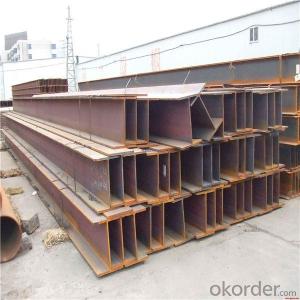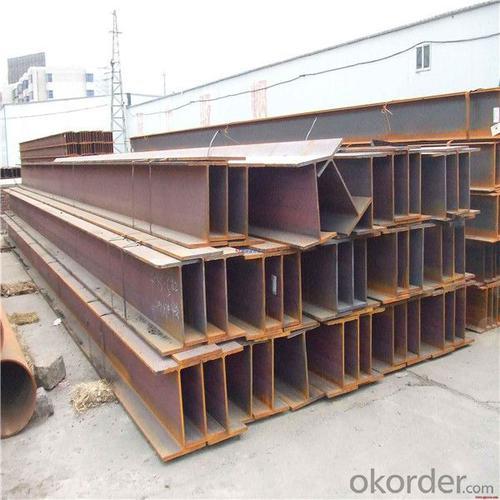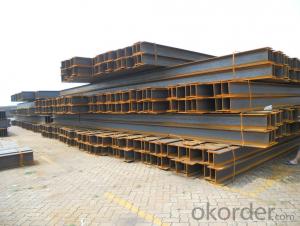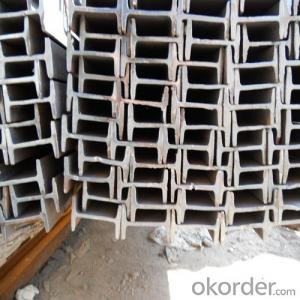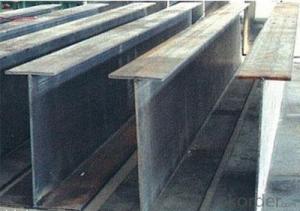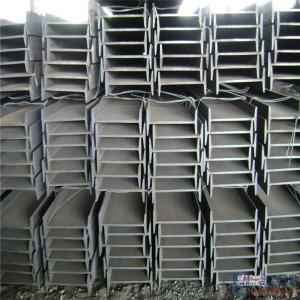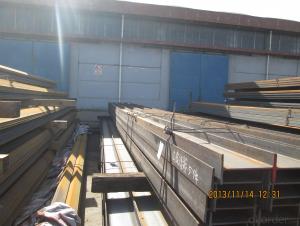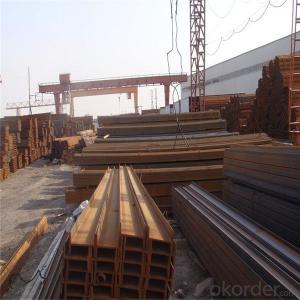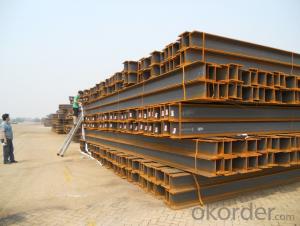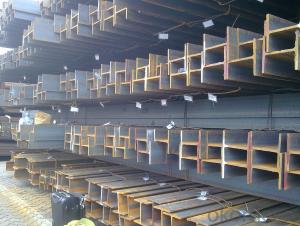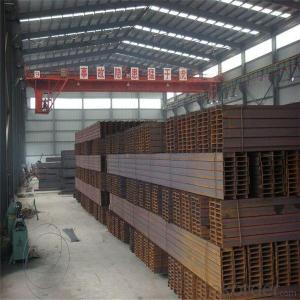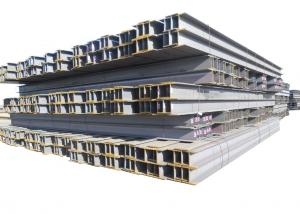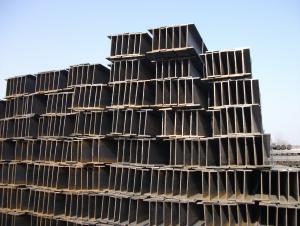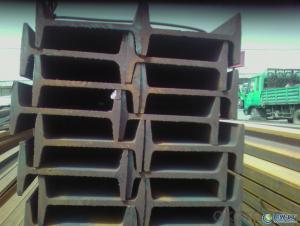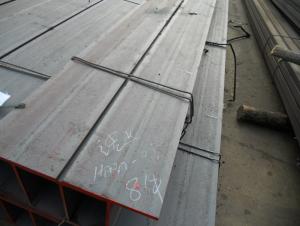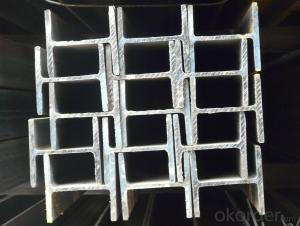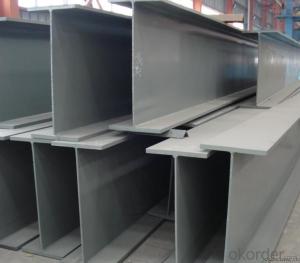GB Steel H Beam at Good Price and Qaulity
- Loading Port:
- Shanghai
- Payment Terms:
- TT OR LC
- Min Order Qty:
- 10000 m.t
- Supply Capability:
- 10000 m.t/month
OKorder Service Pledge
OKorder Financial Service
You Might Also Like
Specification
Quick Detail
Place of Origin: | Jiangsu, China (Mainland) | Grade: | SS400, SS400,ST37-2, A36, S235JR, Q235 | Technique: | Hot Rolled |
Thickness: | 8mm | Application: | construction | Length: | 6m-16m |
Standard: | JIS, ASTM,BS,EN | Flange Width: | 50-34mm | Flange Thickness: |
|
We can provide qualify goods,competitive price and speedy delivery.
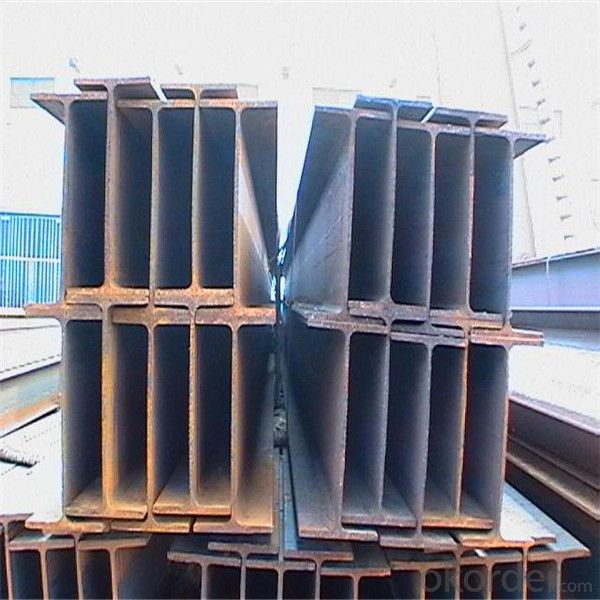
Products Description
Description | High Frenquency Thin-walled H Beam | |
Product Name | H Beam | |
Specification | Height:75-500mm Width:50-250mm | |
Standard | GB700-1998,GB/T1591-1994 | |
Material | Q235B,Q345B | |
Application | a. Bridge and post structures in industry and civil use of steel construction. | |
Certificates | ISO,SGS,BV,TUV,Lloyd | |
MOQ | 20 tons or according to customers’ requirement. | |
Port of Delivery | Tianjin Port of China | |
Remarks | We can provide qualify goods,competitive price and speedy delivery |
Packaging & Delivery
Packaging Details: | Packed with waterproof paper and steel banding. |
Delivery Detail: | 15-25 |
FAQ
1. How can I get some samples?
We are honored to offer you samples. New clients are expected to pay for the courier cost. The samples are free for you.
2 Do you have any certificates?
Our products passed inspection of SGS, FDA, and CE Quality is priority! Every worker keeps the QC from the very beginning to the very end, Quality control department especially responsible for quality checking in each process.
3 Can your factory print or emboss my logo on the goods?
Yes, we can print or emboss the logo on the goods or their packing box.
4 What information should I let you know if I want to get a quotation?
1) The specification of products (length x width x thickness);
2) The temper and alloy.
3) The final product you will use to be made
4 It will be better if you can show us the pictures or design sketch. Samples will be best for clarifying. If not, we will recommend relevant products with details for reference.We usually produce goods based on customers
Samples or based on customers’ picture, logo, sizes etc.
- Q: Are steel H-beams suitable for structures with large spans?
- Yes, steel H-beams are suitable for structures with large spans. They are known for their high strength-to-weight ratio and ability to withstand heavy loads, making them an ideal choice for long-span structures such as bridges, industrial buildings, and large-scale infrastructure projects. The H-shape of the beam provides excellent structural support and stability, allowing for greater spans without compromising structural integrity.
- Q: H steel compared with ordinary steel in the end what are the advantages and disadvantages?
- Easy to machine: easy to connect and install, easy to remove and reuse.
- Q: Are Steel H-Beams resistant to mold or mildew?
- Yes, steel H-beams are resistant to mold or mildew growth due to their non-porous and non-organic nature.
- Q: Can steel H-beams be used in data center structures?
- Yes, steel H-beams can be used in data center structures. H-beams are commonly used in construction due to their strength, durability, and load-bearing capabilities. In data centers, where heavy equipment and machinery are housed, steel H-beams provide the necessary support and stability for the infrastructure. These beams can bear significant loads and resist high levels of stress, making them ideal for data center structures. Additionally, steel H-beams can be easily customized and fabricated to meet specific design requirements, ensuring the structural integrity of the data center.
- Q: Can steel H-beams be used in the construction of sports arenas?
- Yes, steel H-beams can definitely be used in the construction of sports arenas. H-beams are known for their strength and durability, making them an ideal structural component for large-scale projects like sports arenas. They provide excellent load-bearing capabilities, allowing for the construction of wide spans and high ceilings. Moreover, steel H-beams offer versatility in design and are often used to support grandstands, roofs, and other critical elements of sports arena infrastructure.
- Q: How do you protect steel H-beams from corrosion?
- One effective way to protect steel H-beams from corrosion is by applying a protective coating, such as paint or a corrosion-resistant coating. This barrier layer creates a physical barrier between the steel and the external environment, preventing moisture and other corrosive elements from reaching the metal surface. Additionally, regular inspection and maintenance are crucial to identify and address any signs of corrosion early on, ensuring timely repairs or reapplication of protective coatings.
- Q: How do steel H-beams perform in structures with large spans and cantilevers?
- Steel H-beams are highly effective in structures with large spans and cantilevers. Due to their inherent strength and stiffness, they provide excellent support and load-bearing capacity, making them suitable for withstanding heavy loads and long spans. The H-beam's shape allows for efficient distribution of forces, ensuring stability and minimizing deflection. Additionally, steel H-beams have a high resistance to bending, resulting in reliable performance and structural integrity even in challenging conditions.
- Q: What are the considerations for selecting the appropriate grade of steel for H-beams?
- When selecting the appropriate grade of steel for H-beams, there are several key considerations to take into account. These considerations include the required strength and load-bearing capacity, the specific application and environmental conditions, as well as cost and availability. Firstly, it is important to determine the required strength and load-bearing capacity of the H-beams. This will depend on the specific use and the loads that the beams will be subjected to. For example, if the H-beams will be used in construction projects where they will support heavy loads, a high-strength steel grade such as ASTM A572 or ASTM A992 may be appropriate. These grades offer excellent strength and are commonly used in structural applications. Secondly, the specific application and environmental conditions must be taken into account. H-beams may be used in various industries and environments, including construction, manufacturing, and infrastructure projects. If the beams will be exposed to corrosive elements, such as in marine or coastal environments, a corrosion-resistant steel grade like ASTM A588 or ASTM A709 may be necessary to ensure long-term durability. Additionally, certain applications may require specific properties such as fire resistance or impact resistance, which will also influence the choice of steel grade. Cost and availability are also important considerations when selecting the appropriate grade of steel for H-beams. Different steel grades have varying costs and availability in the market. It is essential to consider the budget for the project and ensure that the chosen steel grade is within the cost constraints. Availability is another factor to consider, as certain steel grades may be more readily available than others, which can impact project timelines and logistics. In conclusion, the considerations for selecting the appropriate grade of steel for H-beams include the required strength and load-bearing capacity, the specific application and environmental conditions, as well as cost and availability. By carefully evaluating these factors, engineers and project managers can choose the most suitable steel grade to ensure the optimal performance and longevity of H-beams in their intended application.
- Q: How do steel H-beams contribute to green roof design?
- Steel H-beams contribute to green roof design by providing a strong and durable framework to support the weight of the green roof system. These beams are typically made from recycled steel, promoting sustainability. Additionally, their structural integrity allows for the installation of extensive green roofs, which help to reduce stormwater runoff, improve air quality, and enhance energy efficiency in buildings.
- Q: What are the different types of steel H-beam connections for seismic-resistant buildings?
- There are several different types of steel H-beam connections that can be used in seismic-resistant buildings. These connections are specifically designed to withstand the forces and vibrations experienced during earthquakes, ensuring the structural integrity of the building. Some of the commonly used types of steel H-beam connections for seismic-resistant buildings include: 1. Welded connections: This is the most common type of connection used in seismic-resistant buildings. Welded connections involve joining the H-beams together using various welding techniques such as fillet welds or groove welds. Welded connections provide excellent strength and stiffness, making them suitable for seismic applications. 2. Bolted connections: Bolted connections involve using bolts and nuts to join the H-beams together. These connections offer ease of installation and flexibility for future modifications or repairs. However, they may not provide the same level of stiffness as welded connections. 3. Moment connections: Moment connections are designed to transfer both vertical and horizontal forces between H-beams while allowing rotational movement. This type of connection is commonly used in beam-to-column joints and provides enhanced resistance against seismic forces by allowing controlled plastic deformation. 4. Shear connections: Shear connections are used to transfer vertical loads between H-beams. These connections are designed to resist shearing forces and prevent the beams from sliding relative to each other. Shear connections are essential for maintaining the stability of the structure during seismic events. 5. Composite connections: Composite connections involve combining steel H-beams with other materials such as concrete or timber. These connections offer enhanced strength, stiffness, and ductility, making them suitable for seismic-resistant buildings. 6. Moment-resisting connections: Moment-resisting connections, also known as rigid connections, provide high resistance against lateral forces. These connections are designed to maintain rigidity and prevent rotation between H-beams and other structural elements, ensuring the building remains stable during seismic events. It is essential to consult with structural engineers and adhere to local building codes and regulations when selecting and designing steel H-beam connections for seismic-resistant buildings. The specific type of connection used will depend on factors such as the building design, anticipated seismic forces, and desired level of performance.
Send your message to us
GB Steel H Beam at Good Price and Qaulity
- Loading Port:
- Shanghai
- Payment Terms:
- TT OR LC
- Min Order Qty:
- 10000 m.t
- Supply Capability:
- 10000 m.t/month
OKorder Service Pledge
OKorder Financial Service
Similar products
Hot products
Hot Searches
Related keywords
